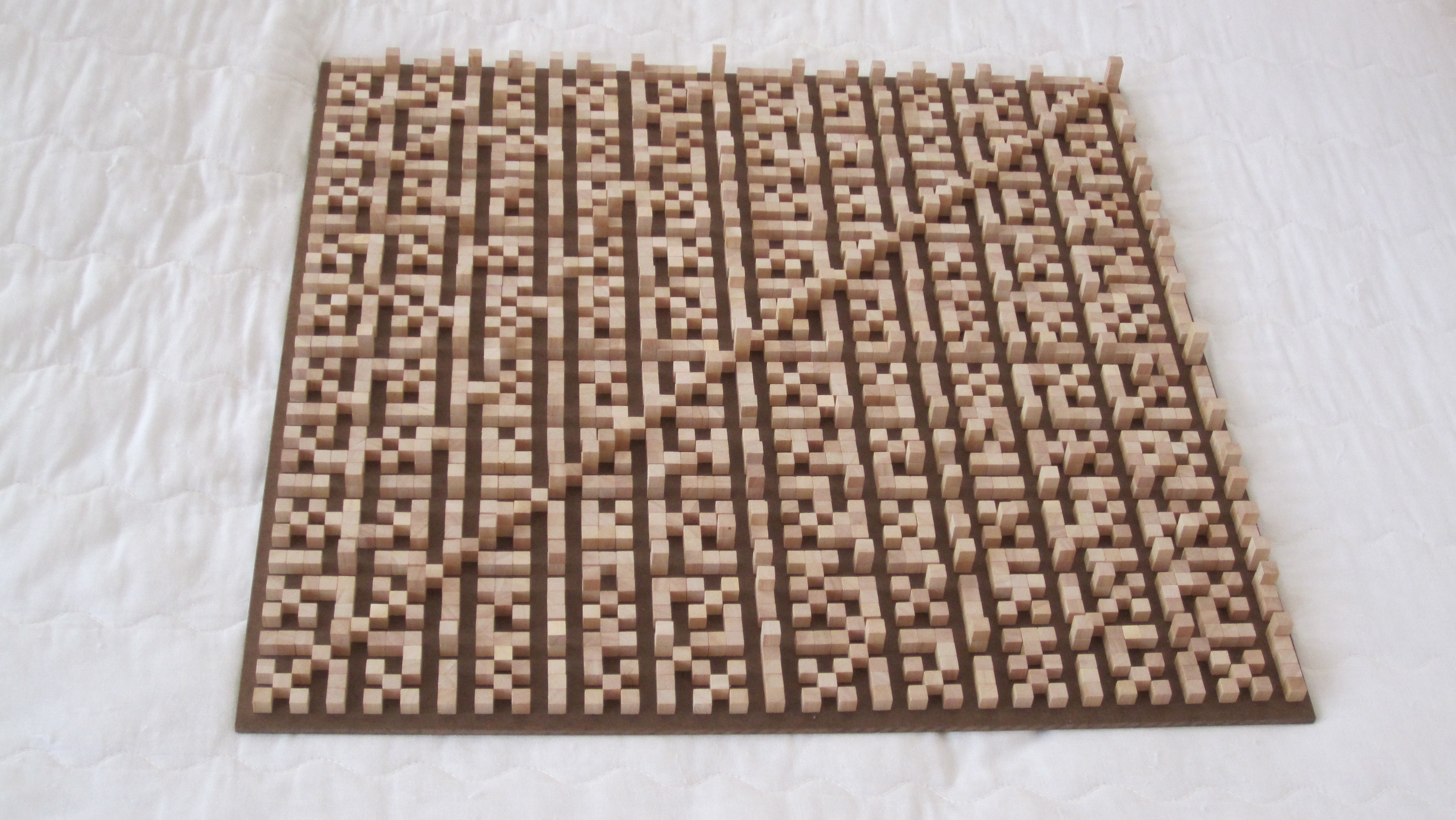An Interesting New Pattern in the Prime Numbers: Parallax Compression

Shaun explained that he had developed a new algorithm (he calls it “Parallax Compression”) for wrapping the primes on a plane, and visualizing their distribution, inspired by the Ulam Spiral. Shaun’s algorithm revealed an interesting non-random, fractal-like pattern in the distribution of primes, that to our knowledge, had not been found before. It made it possible to easily see where there are regions of prime and non-prime numbers, anywhere on the number line, at any level of scale.
What was most interesting was how it was strikingly self-similar at different settings of the key value, n, which determines the number of integers per cell, and the number of rows in the visualization. Shaun’s algorithm revealed an interesting non-random, fractal-like pattern in the distribution of primes, that to our knowledge, had not been found before. It made it possible to easily see where there are regions of prime and non-prime numbers, anywhere on the number line, at any level of scale.
What was most interesting was how it was strikingly self-similar at different settings of the key value, n, which determines the number of integers per cell, and the number of rows in the visualization. When one looks at a visualization of this pattern, it appears reminiscent of runes, Mayan glyphs, Amazonian tribal imagery, tapestries, and hieroglyphics. If you look at it for a moment or two you will see there are several levels of nested geometric shapes within it that appear to have a kind of fractal symmetry:
Source: novaspivack.com